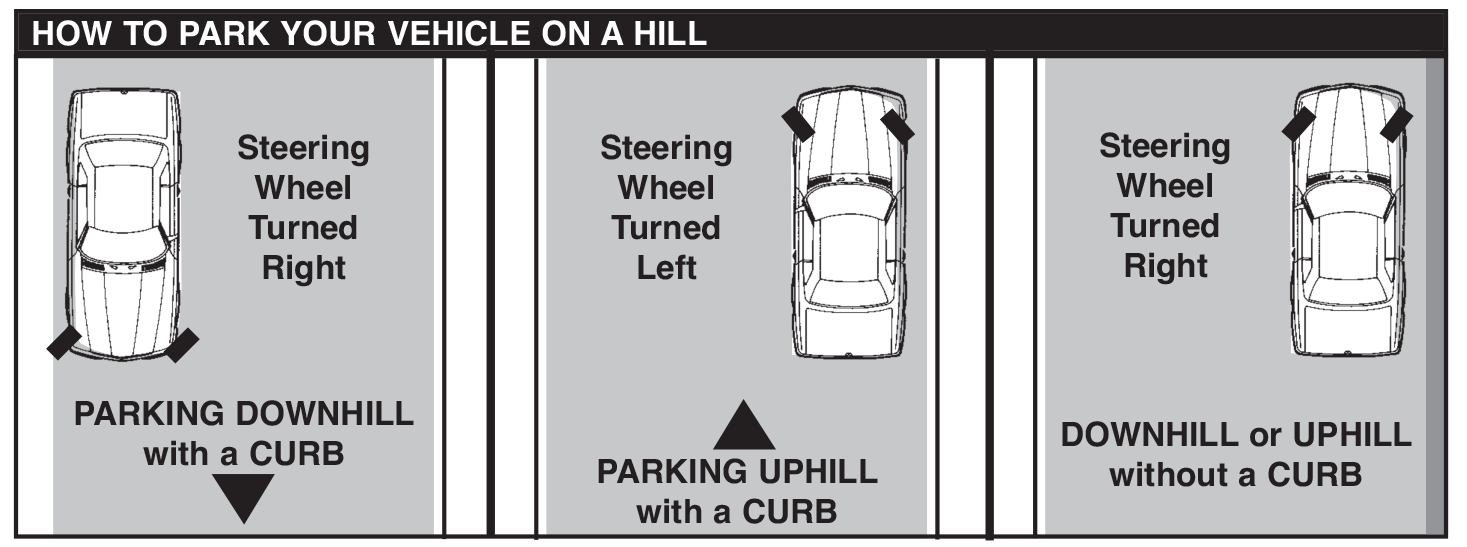Parking
If the street you are on has a curb, park as close to it as you can, but no more than 12 inches away. If it has no curb, pull as far off of the roadway as possible.
When you must park on the roadway, use your four-way flashers and give enough room to passing vehicles. Make sure your vehicle can be seen at least 500 feet in both directions.
Always park in the direction traffic moves. Make sure your vehicle cannot move. Set your parking brake and shift to "Park," if your vehicle has an automatic shift. If your vehicle has a manual shift, turn to "Reverse" or "First."
If you are parked on a hill, turn your wheels as shown in the diagram. When parking your vehicle on a downhill with or without a curb, you should turn your steering wheel so your wheels are completely to the right.

Except in emergencies or unless a police officer tells you to do so, never stop, stand, or park your vehicle at the following places:
- On the roadway side of a vehicle already stopped or parked along the edge or curb of the street (double parking).
- On the sidewalk.
- Within an intersection.
- On a crosswalk.
- Along or opposite any street digging or work area.
- On any bridge or other elevated structure, or in a highway tunnel.
- On any railroad tracks.
- Between roadways of a divided highway, including crossovers.
- Within 50 feet of the nearest rail at a railroad crossing.
- At any place where official signs prohibit parking.
- At any place where official signs prohibit stopping.
- In front of a public or private driveway.
- Within 15 feet of a fire hydrant.
- Within 20 feet of a crosswalk at an intersection.
- Within 30 feet of any flashing signal, stop sign, yield sign, or traffic control device located at the side of a roadway.
- Within 20 feet of a driveway entrance to a fire station.
- Where your vehicle would prevent a streetcar from moving freely.
- On a limited-access highway, unless official traffic control devices indicate you are allowed.
Parallel Parking Tips
If the street you are on has a curb, you must park as close to it as possible, but no more than 12 inches away. If it has no curb, you must pull as far off of the roadway as possible.
The method of parking at a right-hand curb is explained below:

- Stop even with the vehicle ahead and two feet away from it.
- Turn wheels sharply to the right and back slowly toward the vehicle behind.
- As your front door passes the back bumper ahead, quickly straighten the wheels and continue to back straight.
- When clear of the vehicle ahead, turn the wheels sharply to the left and back slowly to the vehicle behind.
- Turn wheels sharply to the right and pull toward the center of the parking space.
Before leaving your vehicle, turn off the engine, remove the key, and lock all doors. Check for traffic behind you before you get out.